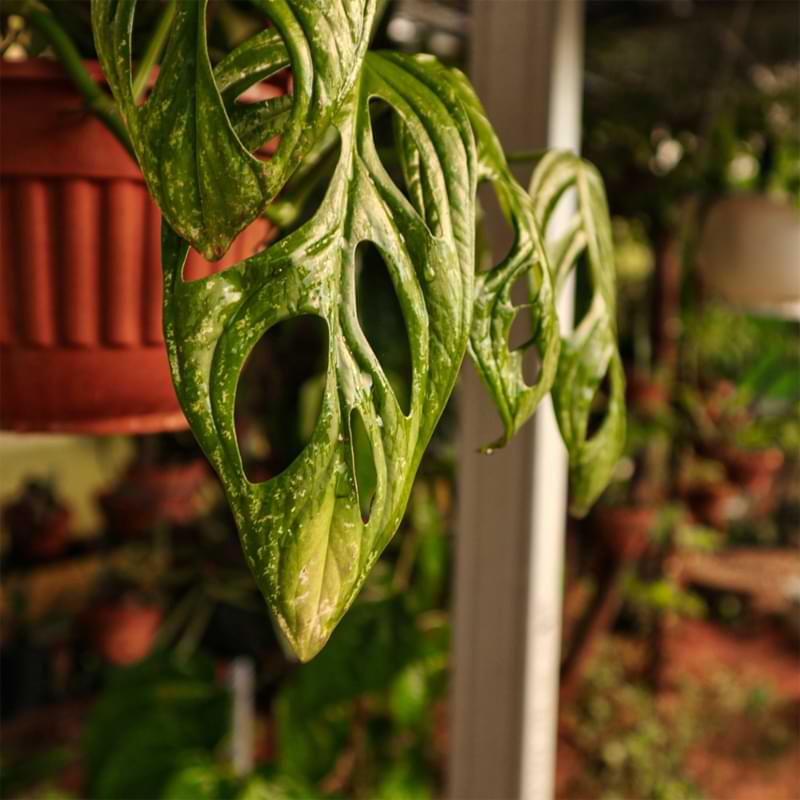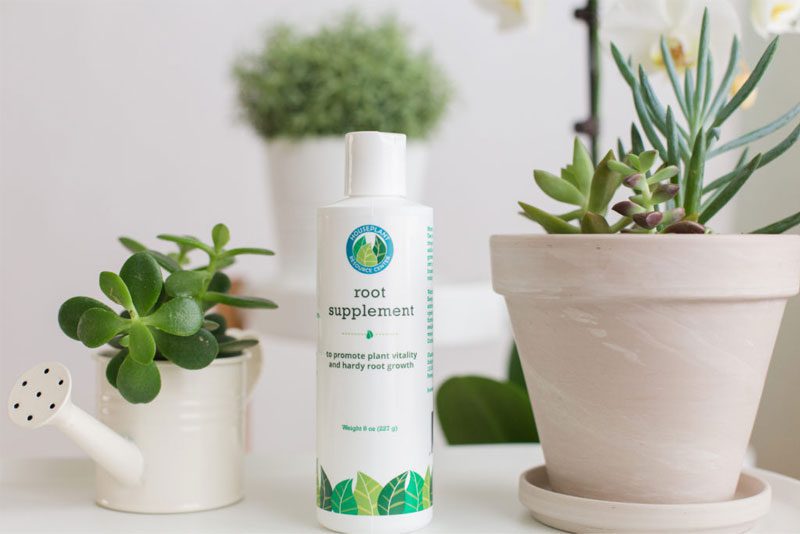One of the most frustrating parts of caring for a monstera plant is getting the watering just right, because sometimes it’s hard to answer the question, is your monstera overwatered or underwatered?
Many of the signs of overwatering are similar to the signs of underwatering. So how are you supposed to tell the difference?
There are a few ways to tell the difference between an over- and underwatered monstera. It’s important to know which is which so you can adjust your watering schedule and help your monstera recover!
Let’s talk about the signs of over- and underwatering in monstera plants.
Table of Contents
Monstera Overwatered or Underwatered Signs
Sign #1: Yellowing leaves
This is one of those issues that can have many different causes (such as nutrient deficiency). But both over- and underwatering can cause your monstera’s leaves to turn yellow.
What’s the difference?
Overwatered: If your monstera is getting too much water, you’ll notice the older leaves, or the leaves toward the bottom of the plant, yellowing first.
Underwatered: If your monstera is too dry, leaves all over the plant will start to turn yellow, possibly starting with the newer, more vulnerable leaves.
Sign #2: Brown spots
Brown spots can have all kinds of root causes (pun intended). Two of the main culprits are root rot (which is caused by overwatering) and excessive dryness. (Other possible causes are chemical burn from overfertilization, lack of humidity, and bacterial infection.
If you see brown spots forming on your monstera’s leaves, the first thing you want to do is assess your watering situation.
What’s the difference?
Overwatered: Soft, dark-brown spots that show up on the lower leaves first indicate overwatering and root rot, especially if your monstera’s stems are also getting dark and mushy. You’ll need to act right away so you can save your plant!
Learn everything you need to know about treating root rot:
How to Diagnose and Treat Root Rot in Monsteras
Underwatered: Crispy, light-brown spots are usually a sign of underwatering (though they could also mean your monstera needs more humidity!). These spots usually start from the edges of the leaves and affect leaves all over the plant.
Sign #3: Drooping
Drooping may be the most frustrating symptom of all! Your monstera may droop if it’s experiencing root shock from being moved recently, if it’s not getting enough light, if it’s a little too cold, or if it’s not getting the right amount of water.
How on earth are you supposed to determine the cause?!
Monstera Overwatered or Underwatered: What’s the difference?
The best thing to do here is to use the process of elimination. If your monstera hasn’t been moved or repotted for a while, if it’s not near a vent or draft, and if it’s getting plenty of bright, indirect sunlight, make sure to check the condition of the soil.
The best way to do this is with a moisture meter so you can get an accurate picture of what’s going on in the root ball. If you don’t have a moisture meter, you can also use a wooden stick (like a chopstick from your last takeout order) or your finger to gauge the moisture level of the soil.
Overwatered: If your soil still feels wet less than 2 inches below the surface or reads wet on your meter and you haven’t watered for a few days, your monstera might have wet feet! Your pot or soil may not be draining quickly enough or you may have watered your plant before it was ready for a drink.
Underwatered: If the soil feels very dry more than a few inches down or reads dry (1-2) on your moisture meter, your monstera probably wants some water!
Keep in mind that it is possible for the soil to feel dry a few inches down even when the root ball is soaked. This is where a moisture meter can help! If this is the case with your monstera, your plant may be root-wrapped or the soil might be compacted, which means that it will have difficulty absorbing water AND draining once the water does sink in.
Note: It’s a good idea to check the soil before each watering, and if you see any of the other signs on this list, just to be sure that you’re getting an accurate view of your monstera’s condition.
How Do You Fix Overwatering and Underwatering in Monsteras?
Now that you’ve figured out the problem…what now?
It depends on the level of damage.
If your monstera is dry
If your monstera is just a little thirsty but overall okay, you can just give it a good watering and move on with your life.
If your monstera is severely dried out and you have a lot of dry, brown spots, go ahead and prune those. (You can trim off the brown spots if you don’t want to take the whole leaf, but be sure to cut inside the brown section or the leaf will still brown around the cut edge.) Water your plant and make sure you stay on top of your watering routine from here on out.
If your monstera is overwatered
If your plant is a little overwatered but not showing signs of root rot, simply give it a chance to dry out a little before watering again. If the problem continues, you may need to repot your monstera into a pot and soil with better drainage.
If you think your monstera has root rot, remove the affected leaves, use our Root Supplement to help the roots heal, and ease up on the watering. If you see more spots, if the stems are mushy, or if the soil has a bad smell, make sure to repot your monstera into fresh, fast draining soil and a clean pot (you can use a new one or clean the old one). Trim away any mushy, dark, or smelly roots before repotting. Use Root Supplement to help repair the root system.
To prevent these issues from happening, make sure to check out these articles so you can water your monstera like a pro!
Should You Bottom Water a Monstera Plant?
How to Water a Monstera: The Ultimate Guide







